A clear understanding of some basics about the science of fermentation will unravel several things about the food you eat. Some common foods that frequent our diet list keep for long or have peculiar flavors thanks to fermentation.
Most traditional fermented foods are products of efforts by previous civilizations to preserve food items. Recent archeological discoveries suggest that humans have been practicing fermentation since 7000 BCE, as excavations in present-day Iraq revealed cheese production dated to that period.
So, this piece will take the cloak off the fermentation process, using simple terms and relatable anecdotes. Join us on this journey through the world of fermented foods.
What is Fermentation?
Fermentation is a biological process through which microorganisms break down specific food components without air. Let’s give some illustrations. Anyone familiar with beer or wine production will notice a foamy formation during the manufacturing process. Also, fermented bread dough tends to swell up during proofing.
The denominating factor in the mentioned instances is that microorganisms capable of anaerobic catabolism are always involved. The anaerobic catabolism of food is simply the breakdown of food molecules in the absence of air or oxygen.
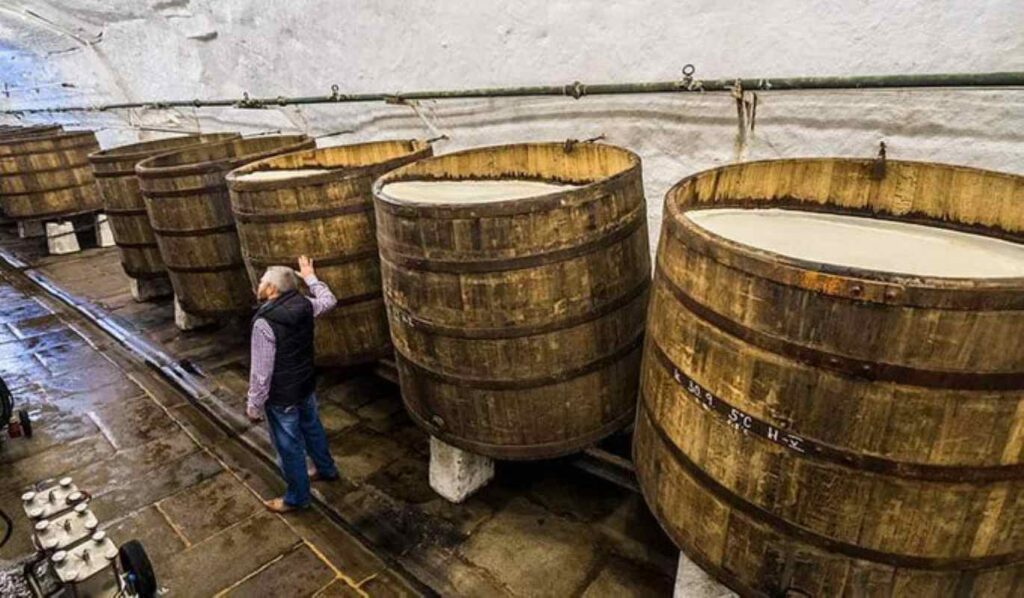
Fermentation processes often yield multiple products after food molecules break down into constituents. This process is not always beneficial as it may lead to food spoilage. However, over the years, human food processors have been able to better understand the science of fermentation. Consequently, they can easily guess food items likely to turn out tastier after fermentation. Like the happen-chance discovery of popcorn, we want to assume that prehistoric civilizations serendipitously found cheese more delicious than fresh milk and wine than grapes.
Common Categories of Food Fermentation
The chemical components produced during fermentation are mostly dependent on two factors. The first is the microorganism involved, and the second is the food component being catabolized.
So, there are four main categories of fermentation, however, the first two are very prolific:
- Alcoholic fermentation involves the breakdown of carbohydrates in juices and cereal grains into alcohol.
- Lactic acid fermentation is common in milk as microorganisms break down the lactose to lactic acid.
- Alkali fermentation involves the breakdown of complex protein molecules in protein-rich foods to make flavorful condiments.
- Acetic acid fermentation takes the output of alcoholic fermentation as its feed material and converts it into a liquid rich in acetic acid. Vinegar is produced through this category of fermentation.
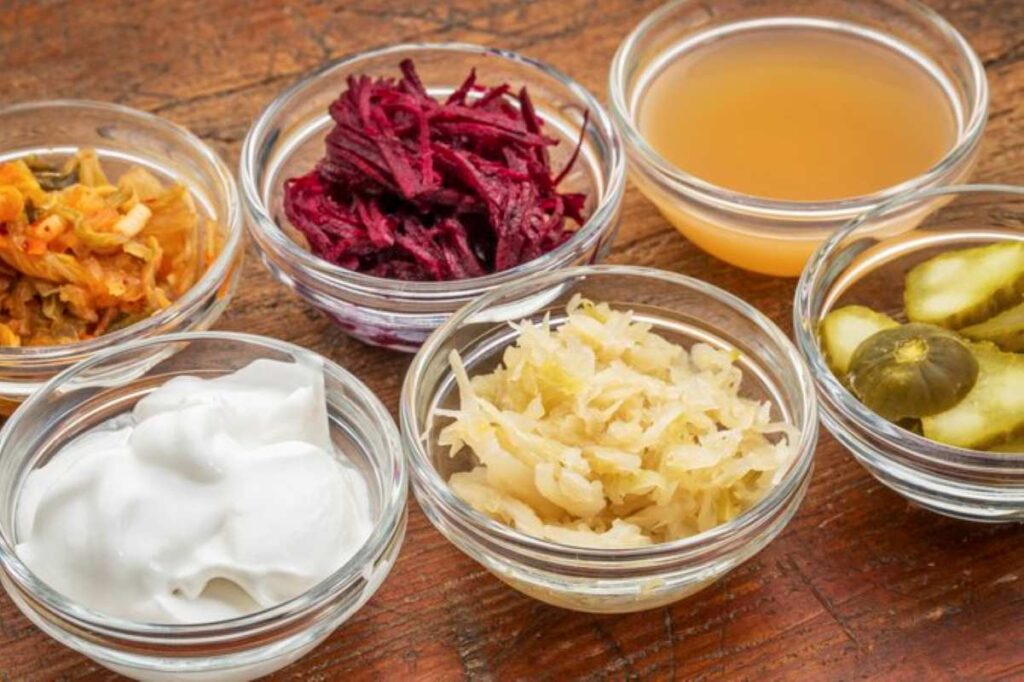
Beneficial bacteria are the most ubiquitous microorganisms during food fermentation processes. For example, Lactobacillus sp. are responsible for lactic acid fermentation during cheese and yogurt production. However, yeasts and molds occasionally feature in the science of fermentation party. By far, bread is the most popular product of yeast fermentation, while tempeh ranks first for mold fermentation.
The Benefits of Fermentation
In prehistoric times, food fermentation often occurred spontaneously and naturally. For example, lactic acid bacteria present in milk that has been left to stand for a while curdle the milk and turn it into a thick mass. Over time, it becomes cheese. However, in recent years, scientific insights into fermentation have been identifying the microorganisms and chemical changes behind the process, making it more controllable.
In addition, fermented foods and their benefits have come to the fore. Indeed, many health-conscious foodies have become fans of fermented food products.
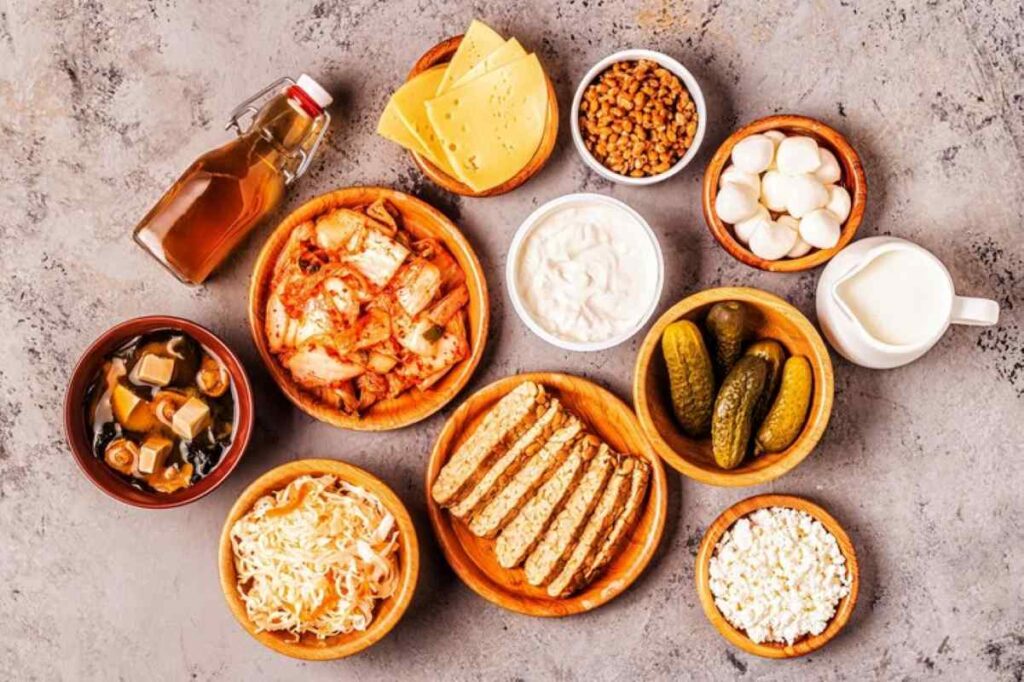
Health-conscious foodies are not particular about fermented food just for the sake of the hype. Instead, several studies have demystified the science of fermentation, making the benefits of traditional fermented foods public knowledge.
Here are some common benefits of food fermentation:
- Most fermented foods help to repopulate the gut microbiome after an incidence of antibiotic abuse or sterilant exposure.
- Fermented foods supply beneficial bacteria and other probiotics to the consumer, thus improving digestion, gut health and, by extension, overall well-being.
- Fermentation often provides a natural alternative to artificial preservatives. For example, most energy and fruit drinks require chemical preservatives for stabilization. Meanwhile, some fermented beverages, like wine, can age for up to a century and taste even better for it.
- Fermented foods are touted as possessing immunity-enhancing capabilities and the potential to mitigate cardiovascular diseases.
- Also, some fermented foods aid the production of digestive enzymes, making it more likely for the body to utilize food nutrients fully.
Popular Fermented Foods Around the World
Fermentation is a universal food process technology. Why? Different variants of traditional fermented foods exist in different parts of the world. However, the most popular fermented foods enjoy global adoption, with cultural variations.

The list of fermented foods from the different cultures of the world is inexhaustible. However, let’s quickly sort the common fermented foods by categories:
1. Fermented beverages
Beer, wine and tea are popular examples.
2. Fermented seafood and meat
Cod liver oil and salami.
3. Fermented fruits and vegetables
Sauerkraut (fermented cabbage), garri (fermented cassava), kimchi and pickles are popular examples.
4. Fermented beans and seeds
Chocolate, tofu and tempeh are common examples.
5. Fermented milk products
Cheese, yogurt, and sour cream are common examples of fermented milk products.
6. Fermented condiments
Soy sauce, iru (fermented locust beans), and vinegar are examples of fermented condiments.
How to Ferment Safely at Home
Folks who run homesteads or those who inherited culinary cultures of specific fermented foods may find themselves having to ferment food at home. If this is you, there are some essential things to consider if the home-based fermentation process is to turn out well.
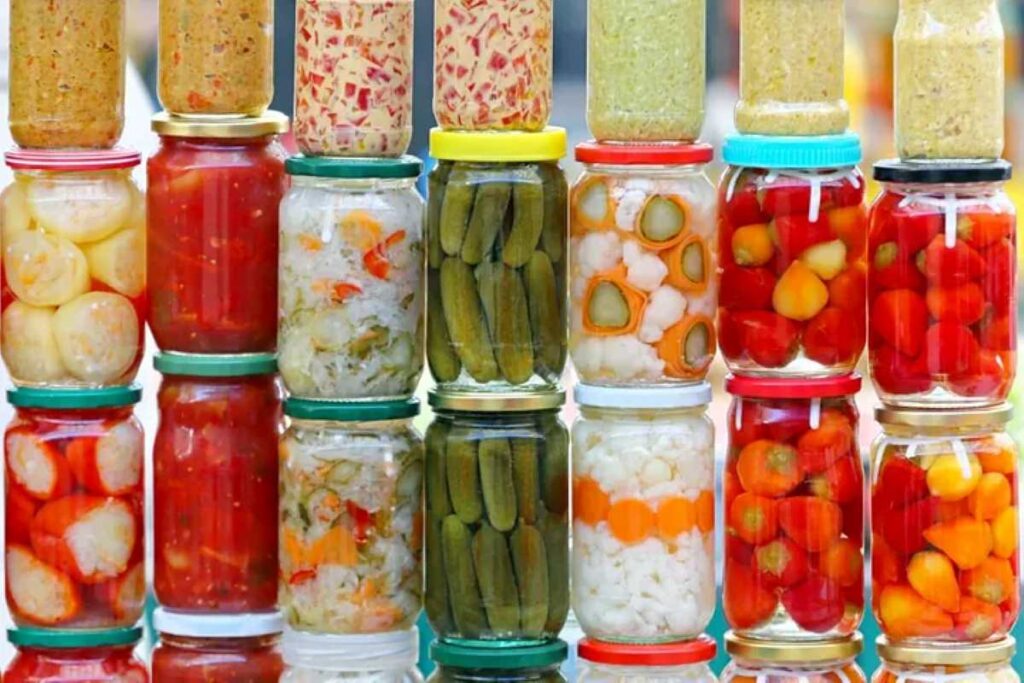
- Sanitation: All the utensils, containers and food materials to be used at any point in the fermentation process should be impeccably clean.
- Choice of ingredients: Fermenting foods at home is often a ploy at food preservation. So, avoid starting with low-quality food materials or ingredients to get a product that lasts longer.
- Natural preservative: What is the point of fermentation if you don’t use natural preservatives? Use solutes like salt or sugar to control the microbial cultures.
- Temperature control: There is a reason why traditional wine producers ferment their product in enclosed areas, sometimes even in basements. It’s to ensure some level of control on the fermentation temperature and avoid sharp fluctuations of the same.
- Immersion: Make sure the food materials are completely submerged in brine, or endeavor to eliminate air gaps in the sealed container.
- Monitoring: Occasionally check up on the setup to ensure the science of fermentation is not going south.
As discussed earlier, there are several benefits to food fermentation. Besides the flavorful allure of some foods in this niche, their health benefits are an added plus. So, endeavor to get more educated about your local fermented foods and how they could improve your gut microbiome. Who knows? You may become a fermented food enthusiast who uses microbial cultures or yeast fermentation to create gourmet food products.

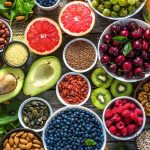










This is a nice piece of job, thanks for this mind refreshing topic